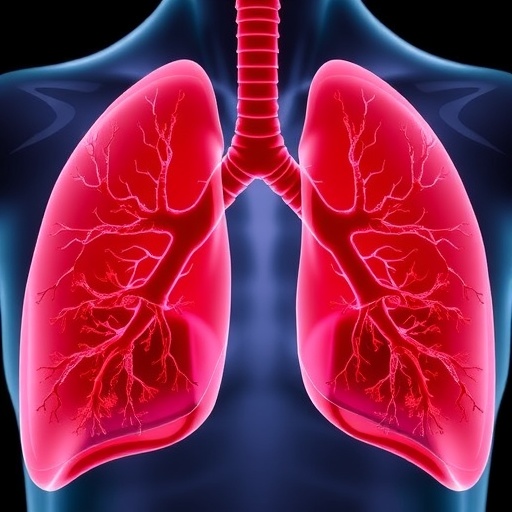In a groundbreaking study conducted at Northwestern University Feinberg School of Medicine, researchers have unraveled the cellular and molecular mechanisms driving chronic lung transplant rejection, a complication that has long perplexed clinicians and researchers alike. Chronic lung allograft dysfunction (CLAD), which develops in over half of lung transplant recipients within five years, remains the leading cause of mortality after the initial post-operative year. This new research offers an unprecedented cellular roadmap illuminating the complex intercellular communications that perpetuate lung tissue damage and rejection following transplantation.
Lung transplantation is a critical intervention for patients with end-stage pulmonary diseases, but its success has been undermined by the high incidence of chronic rejection. Despite the increasing number of lung transplants performed worldwide—approximately 3,000 to 3,500 annually in the United States alone—the underlying drivers of chronic rejection have remained elusive. This study provides significant insights by analyzing nearly 1.6 million cells from rejected lung tissues, distinguishing between donor-derived structural cells and recipient-origin immune cells.
At the core of the findings is the disruptive “dialogue” between donor and recipient cells. The team uncovered that donor lung structural cells and the recipient’s immune cells engage in pathological interactions that drive ongoing inflammation and scarring. This deleterious crosstalk promotes tissue remodeling and fibrosis, ultimately compromising lung function. Such molecular exchanges were mapped comprehensively for the first time, offering a cellular atlas that explains why chronic rejection develops and persists.
One of the most striking discoveries was the identification of a rogue cell population expressing keratin markers KRT17 and KRT5. These aberrant epithelial cells appear to play a central role in driving lung fibrosis not only in transplant rejection but also across a spectrum of lung-scarring diseases including idiopathic pulmonary fibrosis, chronic obstructive pulmonary disease (COPD), and COVID-19-related lung injury. By integrating data across these disease contexts, the researchers constructed a reference framework highlighting shared and unique disease mechanisms, opening avenues for therapeutic strategies that transcend individual diagnoses.
The study also revealed novel immune cell subsets within the diseased lungs. Among these were “exhausted” T cells—immune cells that remain persistently activated yet functionally impaired—and hyper-inflammatory macrophages that exacerbate tissue damage through sustained inflammatory signaling. This immunological milieu drives chronic lung tissue remodeling and fibrosis, compounding the effects of the aberrant structural cells.
To tackle the challenge of analyzing diverse data sets from multiple related diseases, the research team developed innovative computational methodologies. These tools overcame prior limitations of integrating heterogeneous single-cell sequencing data, enabling a high-resolution comparative analysis that delineates the complex cellular landscapes underpinning lung fibrosis and rejection.
Significantly, the team pinpointed specific gene pathways and signaling molecules—such as platelet-derived growth factor (PDGF), growth differentiation factor 15 (GDF15), and tumor necrosis factor-like weak inducer of apoptosis (TWEAK)—crucial to the fibrotic process. These molecular targets illuminate potential pharmacological intervention points. Already available drugs like nintedanib and pirfenidone, currently approved for idiopathic pulmonary fibrosis, may be repurposed to attenuate the fibrotic cascade in lung transplant rejection. This translational potential accelerates the path towards clinical treatments that could benefit thousands of patients worldwide.
Beyond transplant medicine, the implications of this work reverberate through the broader pulmonary fibrosis landscape. Chronic lung diseases affecting millions, including scarring from infectious agents like SARS-CoV-2, could be better understood and therapeutically targeted through the insights derived from this study. Dr. Ankit Bharat, the study’s senior author, likens this molecular map to a “Rosetta Stone” that deciphers the language of lung scarring regardless of origin.
This pioneering research is set for publication in the reputable journal JCI Insight, underscoring its scientific rigor and broad impact. By bridging immunology, pulmonary medicine, and computational biology, the study represents a vanguard approach to decoding complex chronic diseases. It offers hope that new therapies can not only prolong the viability of transplanted lungs but also mitigate fibrosis in a host of other debilitating respiratory conditions.
Northwestern investigators, including Dr. Yuanqing Yan, Taisuke Kaihou, and Emilia Lecuona, among others, contributed to this multidisciplinary endeavor. Their collaborative efforts bring together expertise in thoracic surgery, immunology, and computational genomics, illustrating the power of integrated research to address pressing medical challenges.
As the medical community continues to grapple with the adverse outcomes associated with lung transplantation, this research sets a promising precedent. By elucidating the intricate cellular interactions and molecular signaling pathways driving chronic rejection, it lays the foundation for next-generation therapeutics. These advances hold the promise of transforming lung transplantation outcomes and improving the lives of patients afflicted with diverse lung scarring diseases.
Subject of Research: Cellular and molecular mechanisms underlying chronic lung transplant rejection and lung fibrosis.
Article Title: New cellular insights reveal mechanisms driving chronic lung transplant rejection and fibrosis.
News Publication Date: October 22, 2023
Web References:
Northwestern Medicine Canning Thoracic Institute: https://www.feinberg.northwestern.edu/faculty-profiles/az/profile.html?xid=28017
American Thoracic Society on Chronic Lung Allograft Dysfunction: https://site.thoracic.org/advocacy-patients/patient-resources/chronic-rejection-chronic-lung-allograft-dysfunction-clad-following-lung-transplant
References:
Bharat A, Yan Y, Kaihou T, Lecuona E, Wu X, Shigemura M, et al. (2023). “Comprehensive cellular and molecular characterization of chronic lung allograft dysfunction.” JCI Insight.
Image Credits: Northwestern Medicine
Keywords: chronic rejection, lung transplantation, lung fibrosis, pulmonary fibrosis, immune cells, keratin-expressing cells, chronic lung allograft dysfunction, COPD, COVID-19 lung damage, immunology, thoracic surgery, computational biology.
Tags: cellular roadmap of lung rejectionchronic lung transplant rejectionchronic rejection prevention strategiesdonor recipient cell interactionsdrug targets for lung transplantinflammation in lung rejectionintercellular communication in transplantslung transplant mortality causeslung transplant research studymechanisms of chronic allograft dysfunctionNorthwestern University medical researchpulmonary disease interventions

